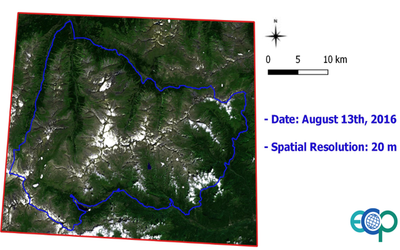A study entitled "Copernicus Sentinel-2 helps preserve wild herbivores' habitat in the Alps" has recently been published on the ESA website “Sentinel On Line”. This article refers to the work conducted within the framework of the H2020 project ECOPOTENTIAL by researchers from the National Research Council of Italy (IGG team: Ilaria Baneschi, Mariasilvia Giamberini, Pietro Mosca, Antonello Provenzale, Brunella Raco; IIA team: Maria Patrizia Adamo, Palma Blonda, Cristina Tarantino) and the Gran Paradiso National Park staff. The status of mountain grasslands in Gran Paradiso National Park has been assessed by investigating the ongoing and expected changes in rainfall, plant productivity, biodiversity and carbon cycling in meadows under different climatic, environmental and land-use regimes. Changes in the vegetation cover of grasslands, as well as in snow cover, were analysed in a range from 1,200 to 3,200 m, using the Copernicus semi-natural grasslands service layer (2012) and August 2016 Copernicus Sentinel-2 data. Findings indicate that the area showing the highest percentage of changes is located within the 2200-2700 m range, an area subject to tree encroachment and to annual changes of mean snow cover. The detected changes seem equally related to the impact of climate change (that lead to an upward shift of the treeline) and to the abandonment of agro-pastoral activities. Scientists have integrated the information provided by in situ measurements with satellite data. These combined data enable scientists to quantify the health status and the ongoing changes of the herbivore habitat and the possible impact that such changes will have on herbivore population dynamics.
The full version of the article published on the ESA website can be reached at this link.
